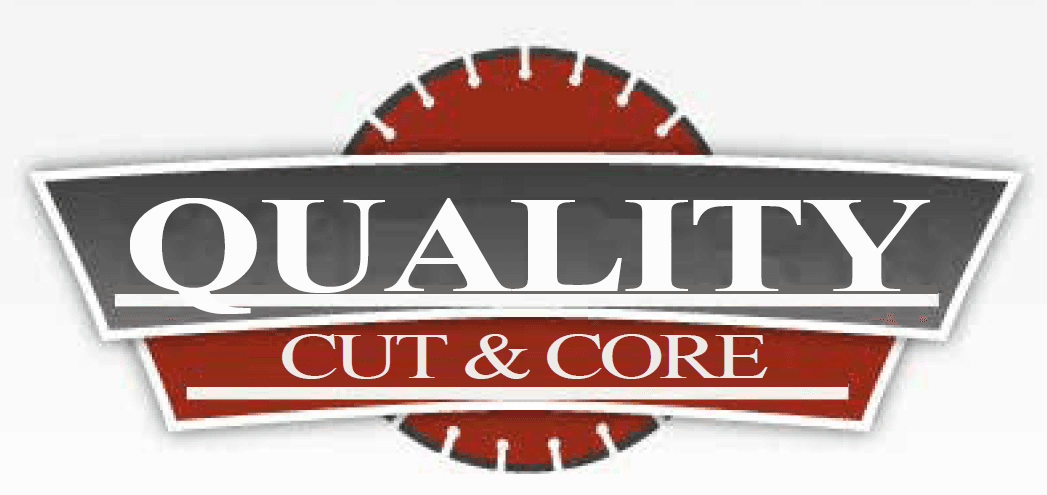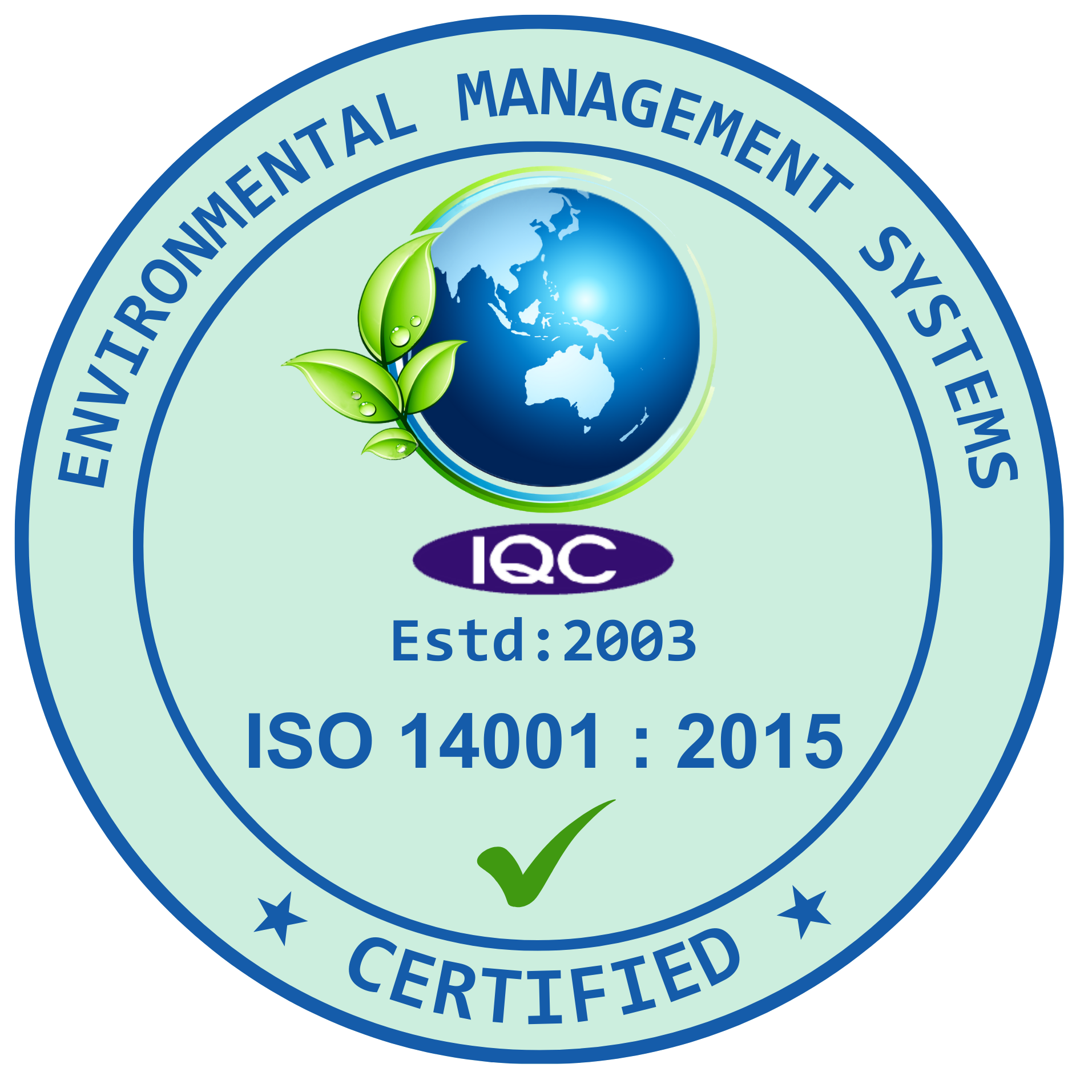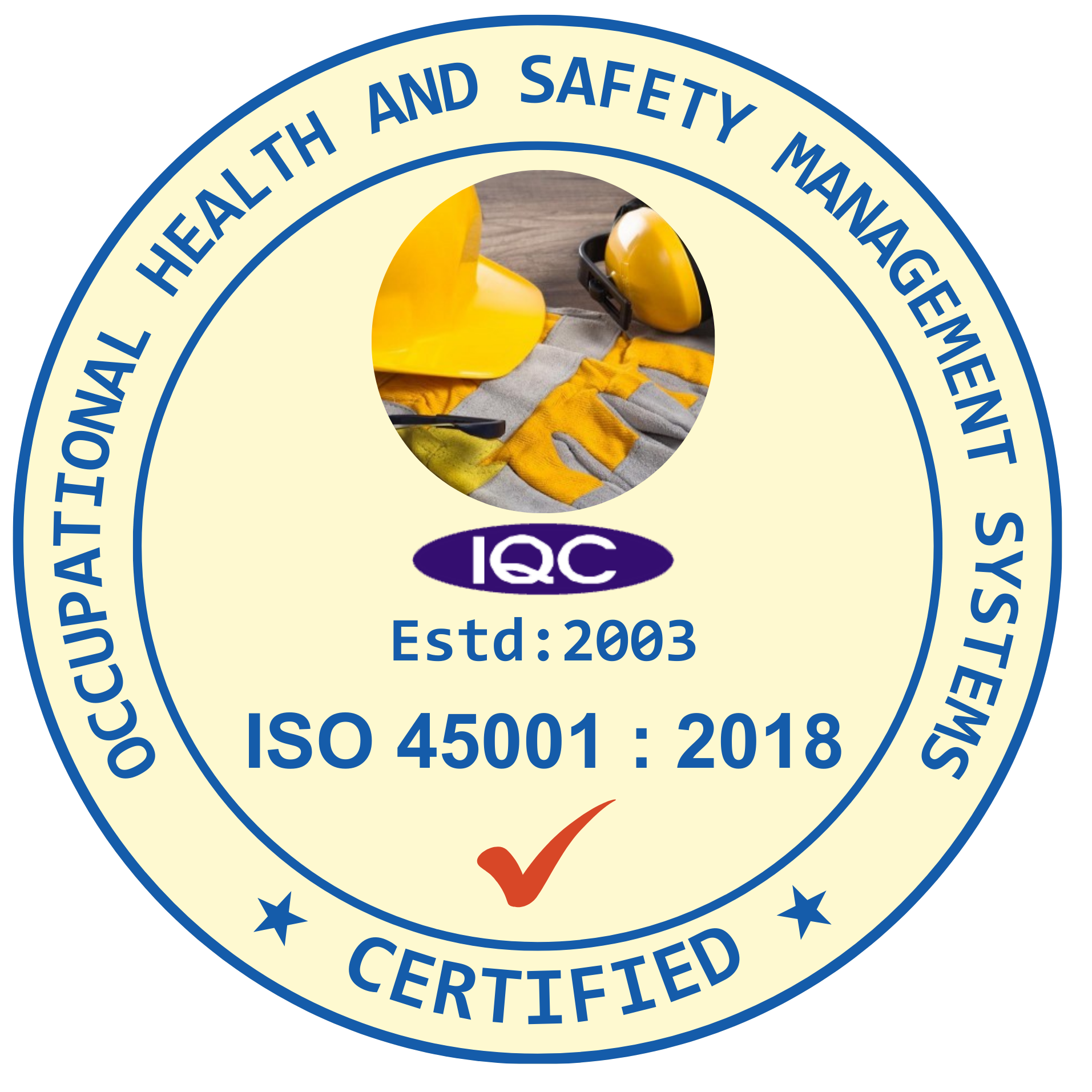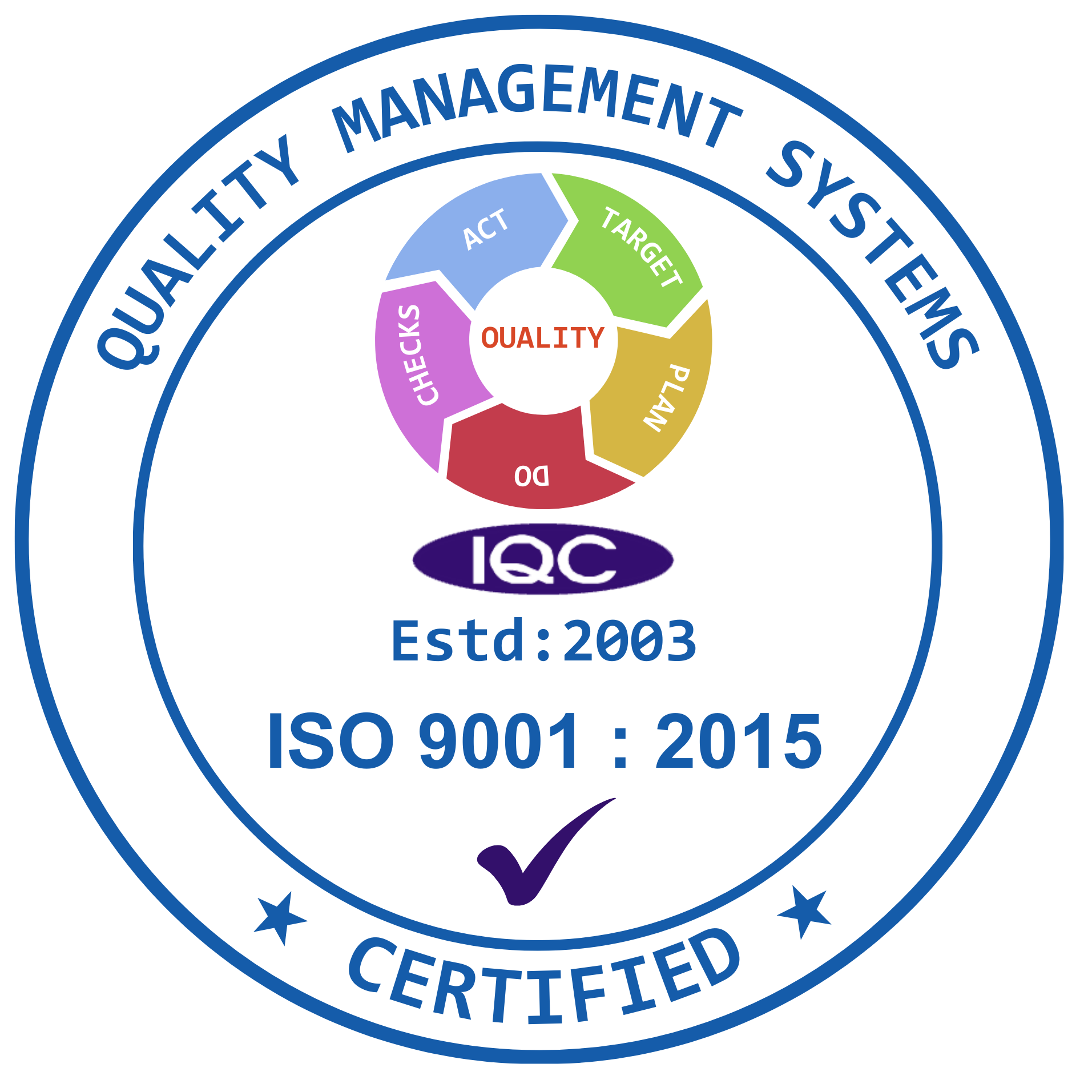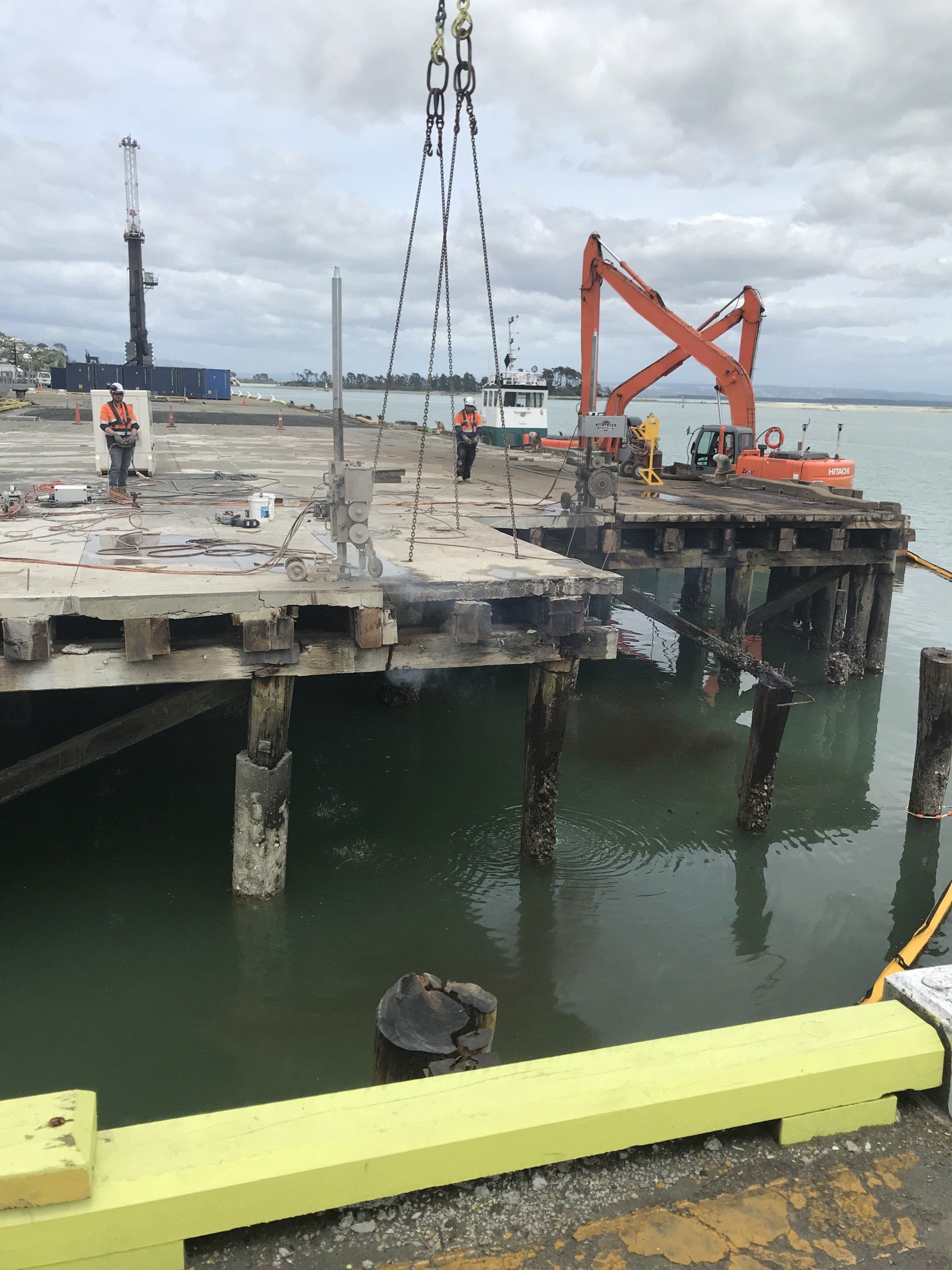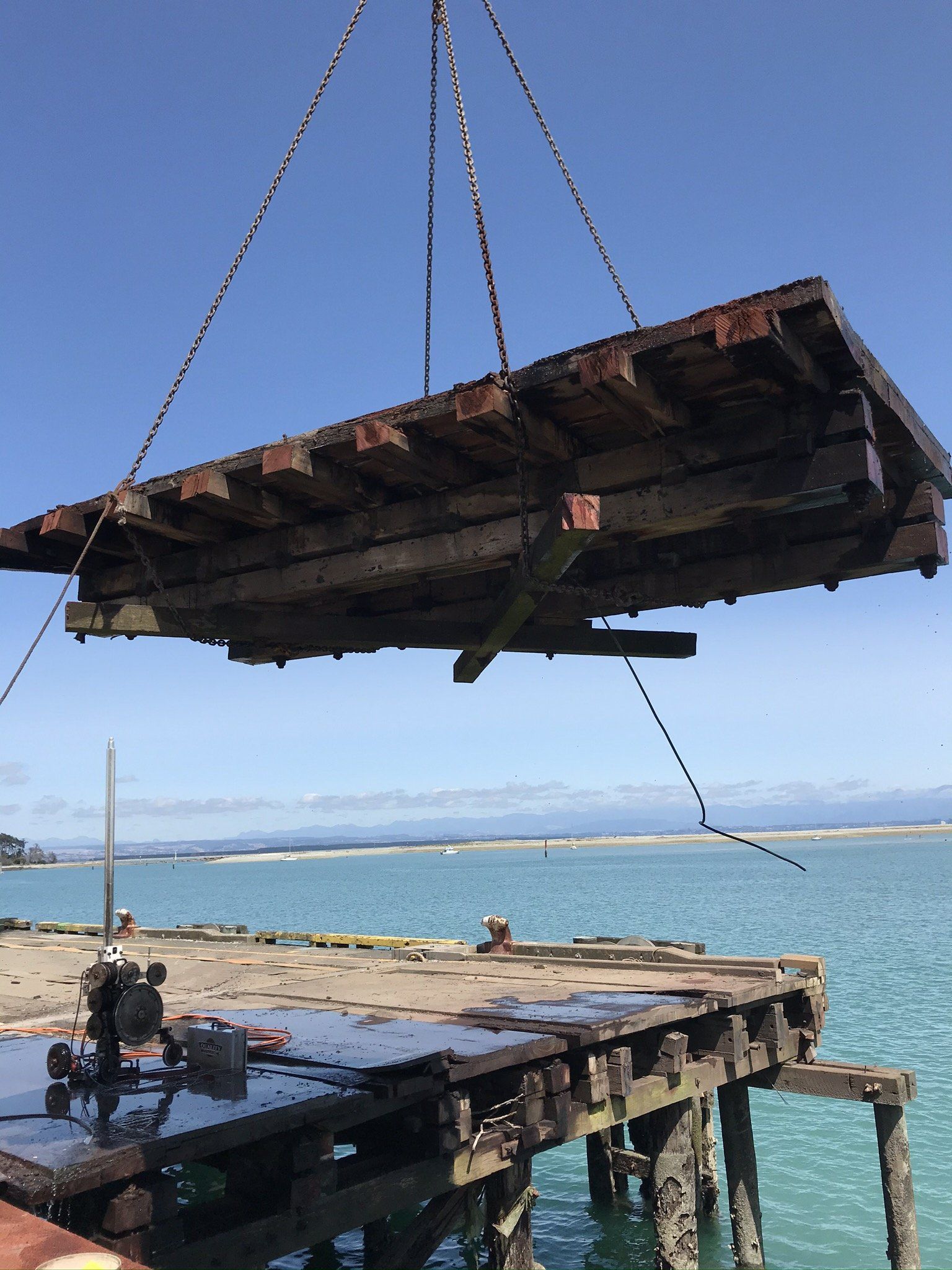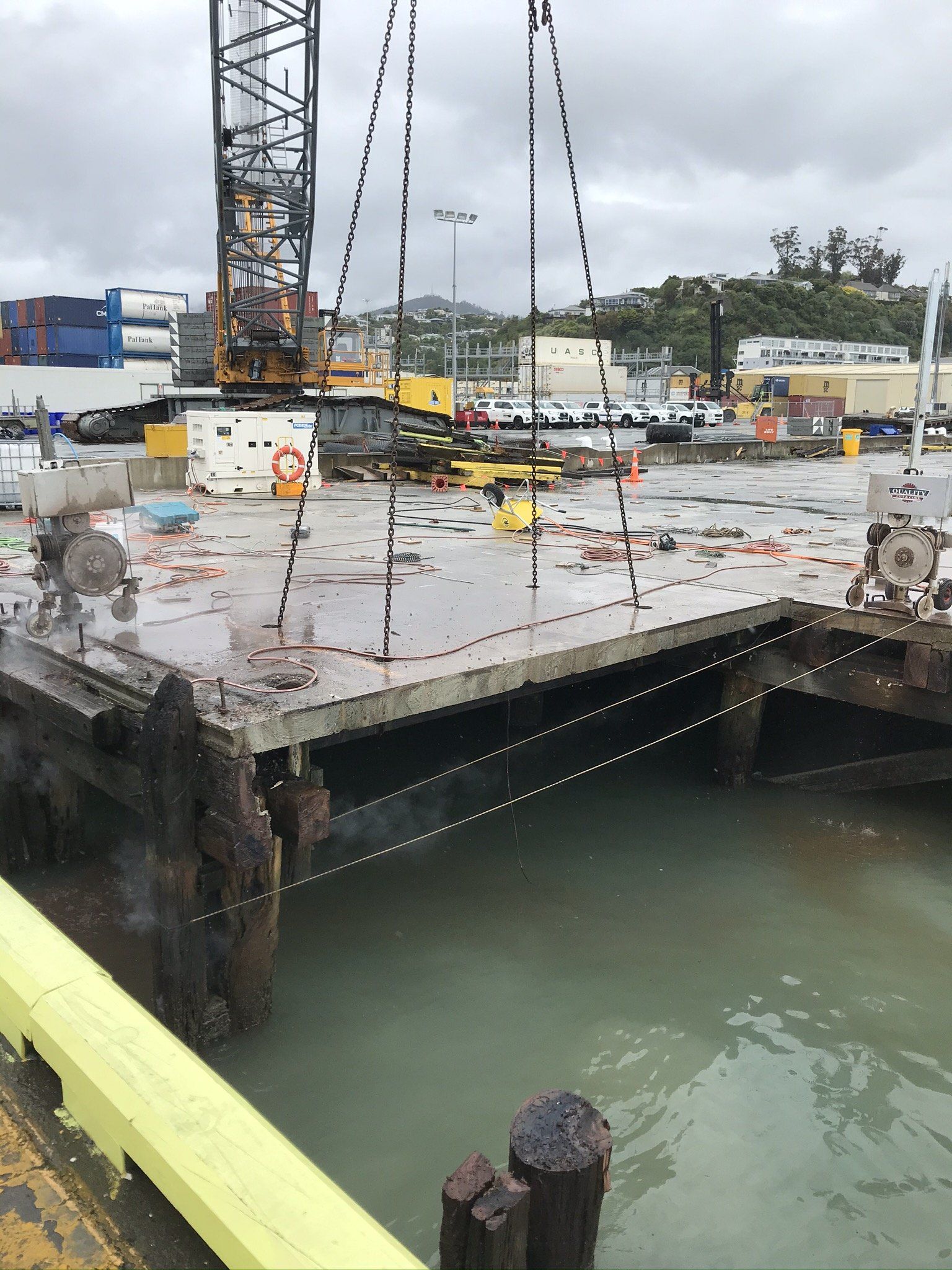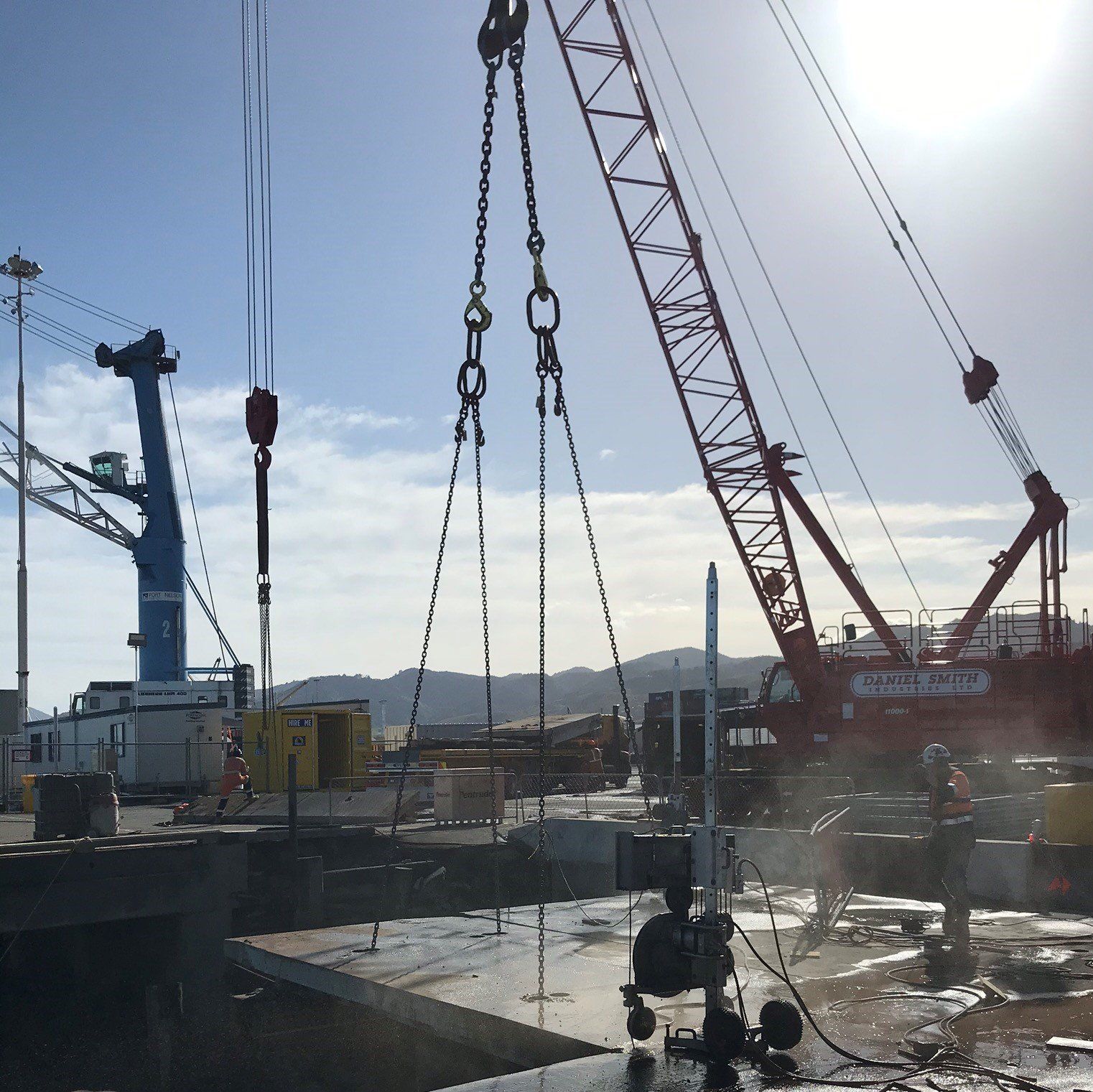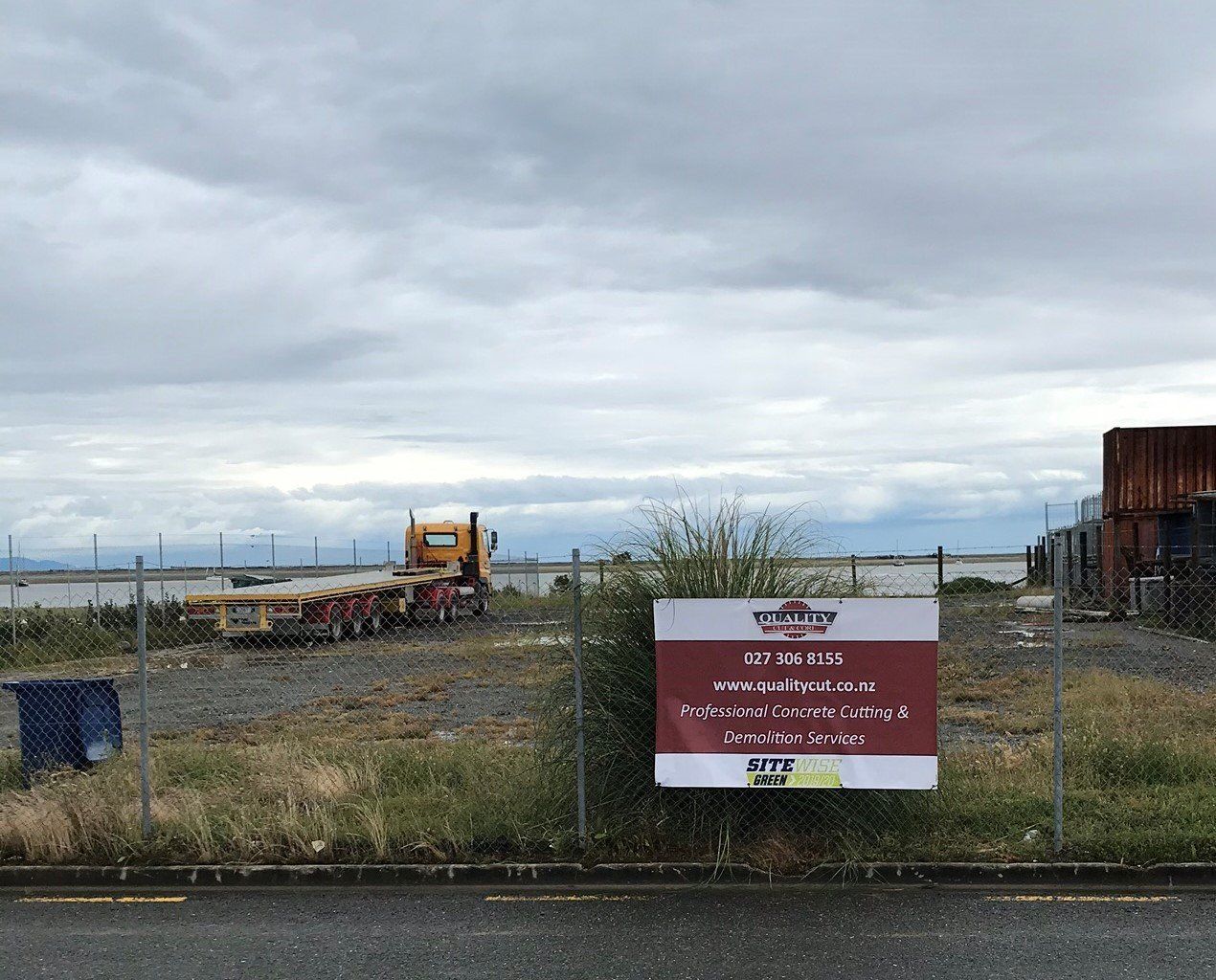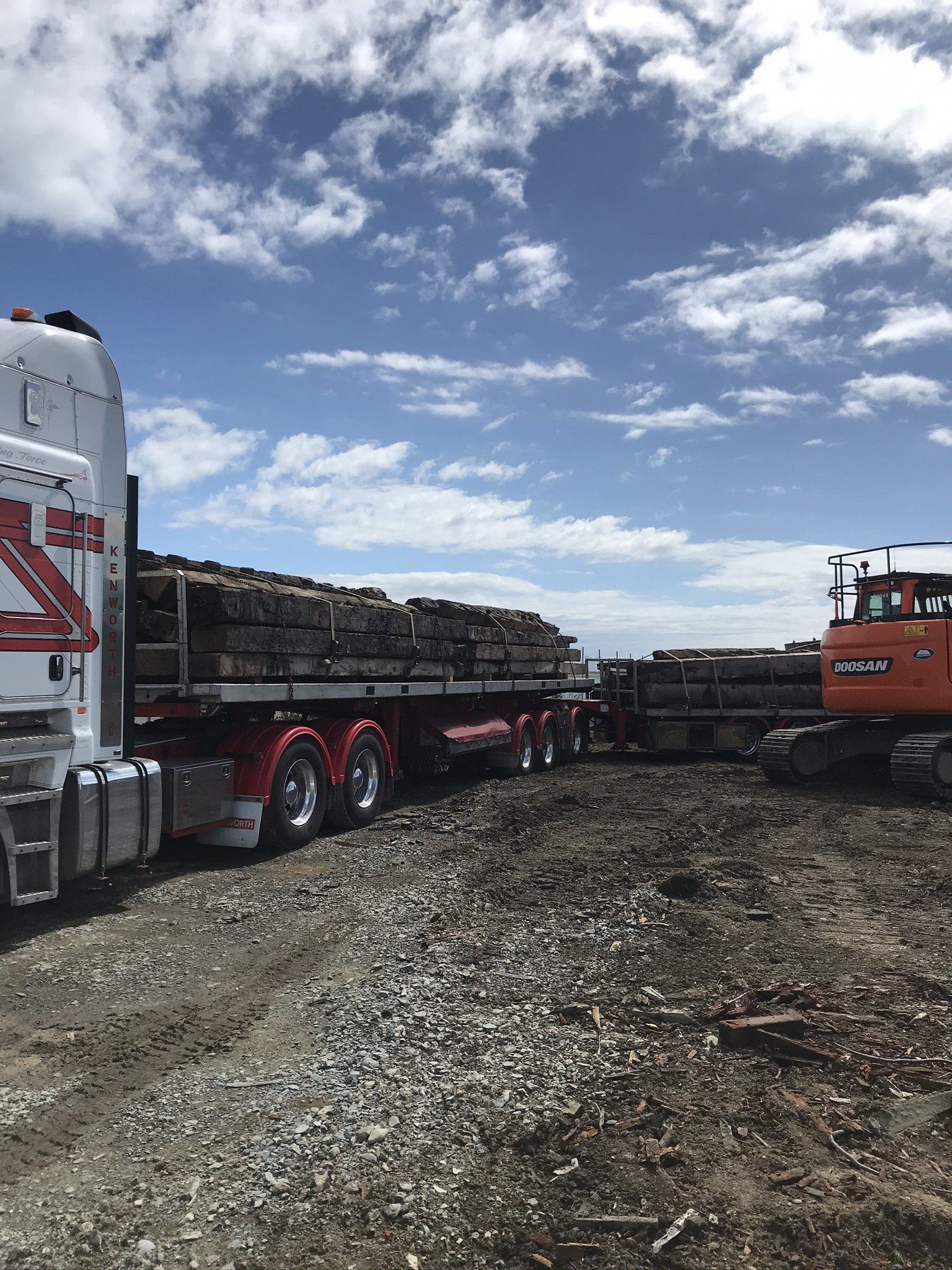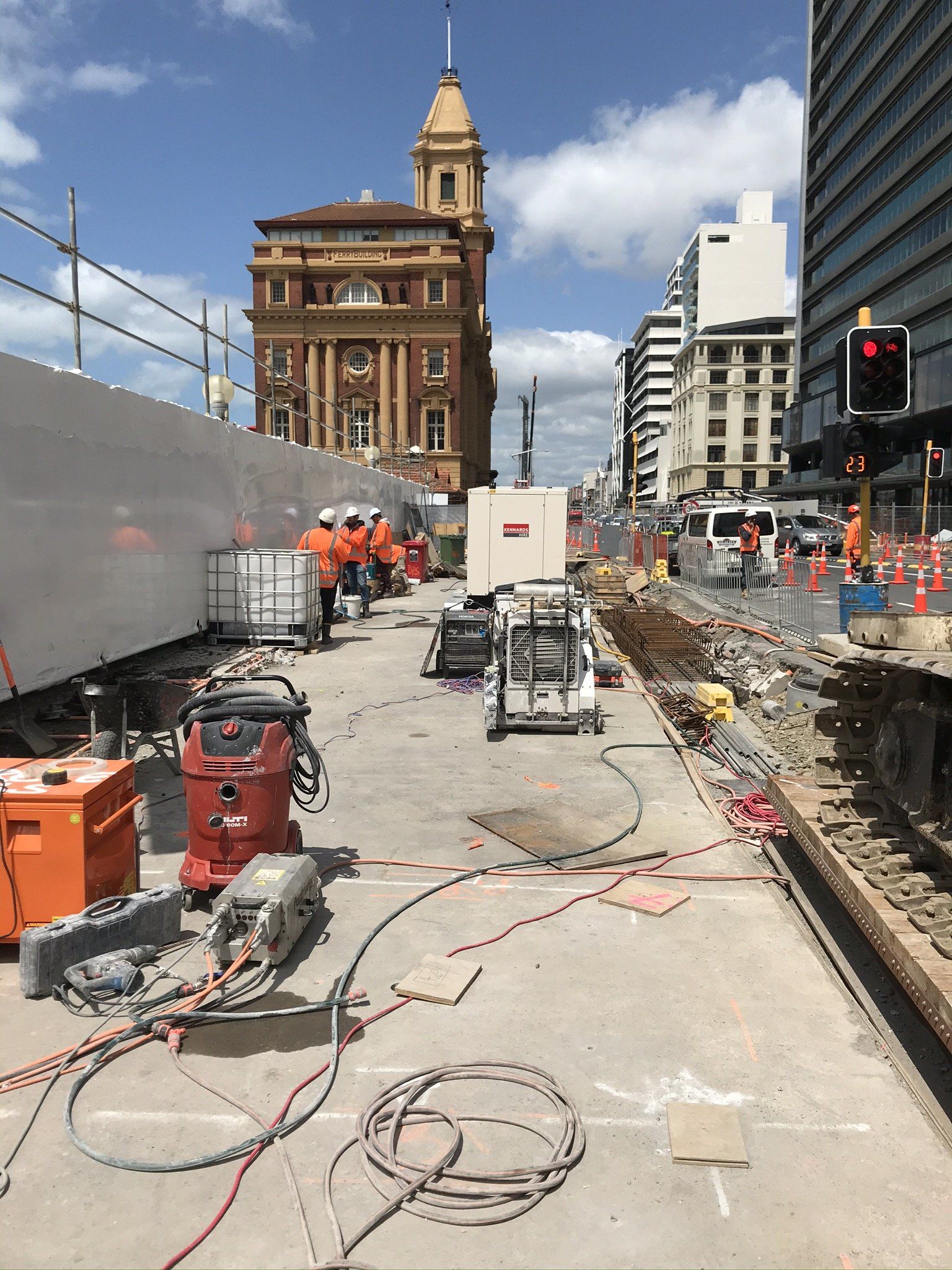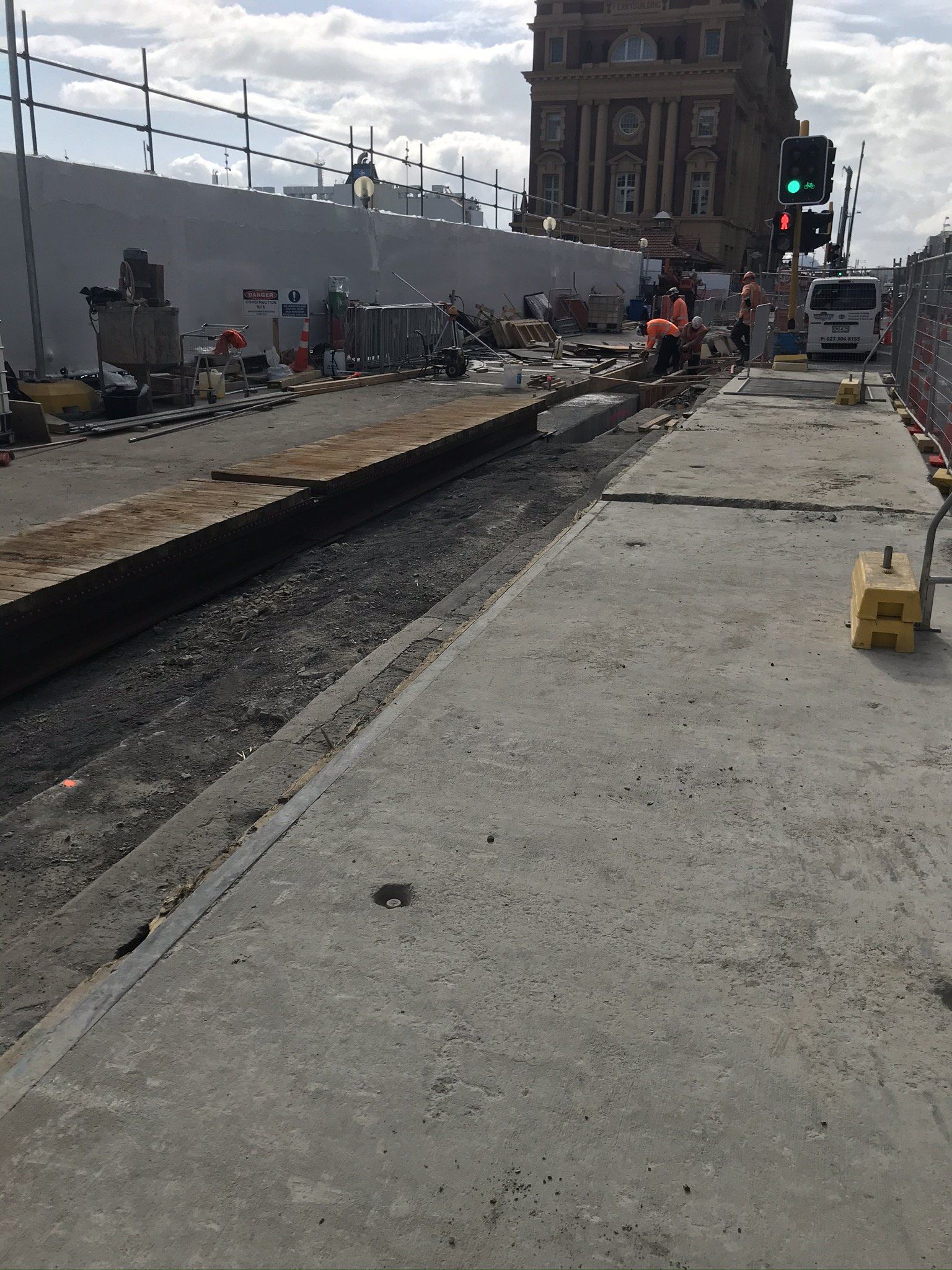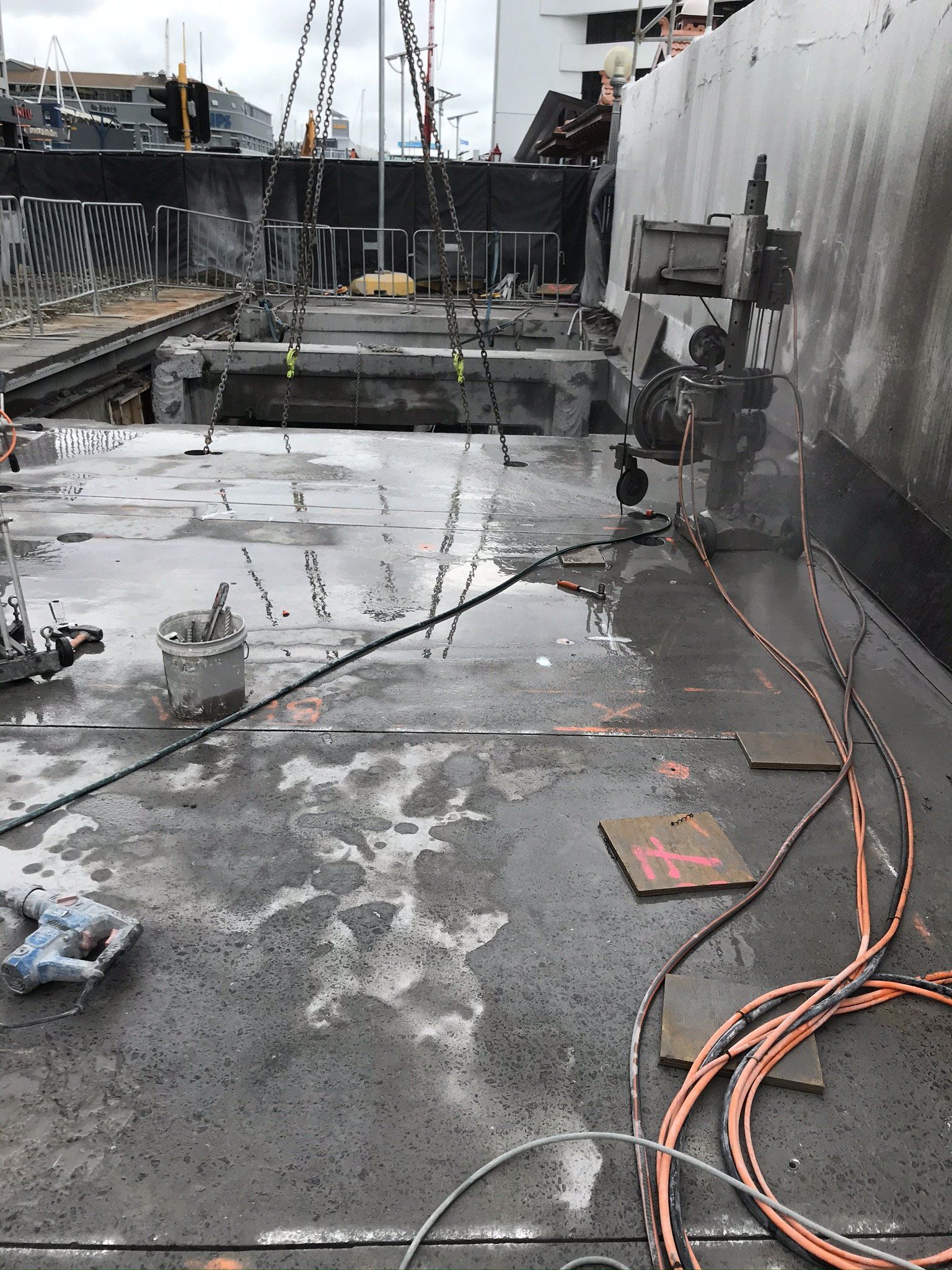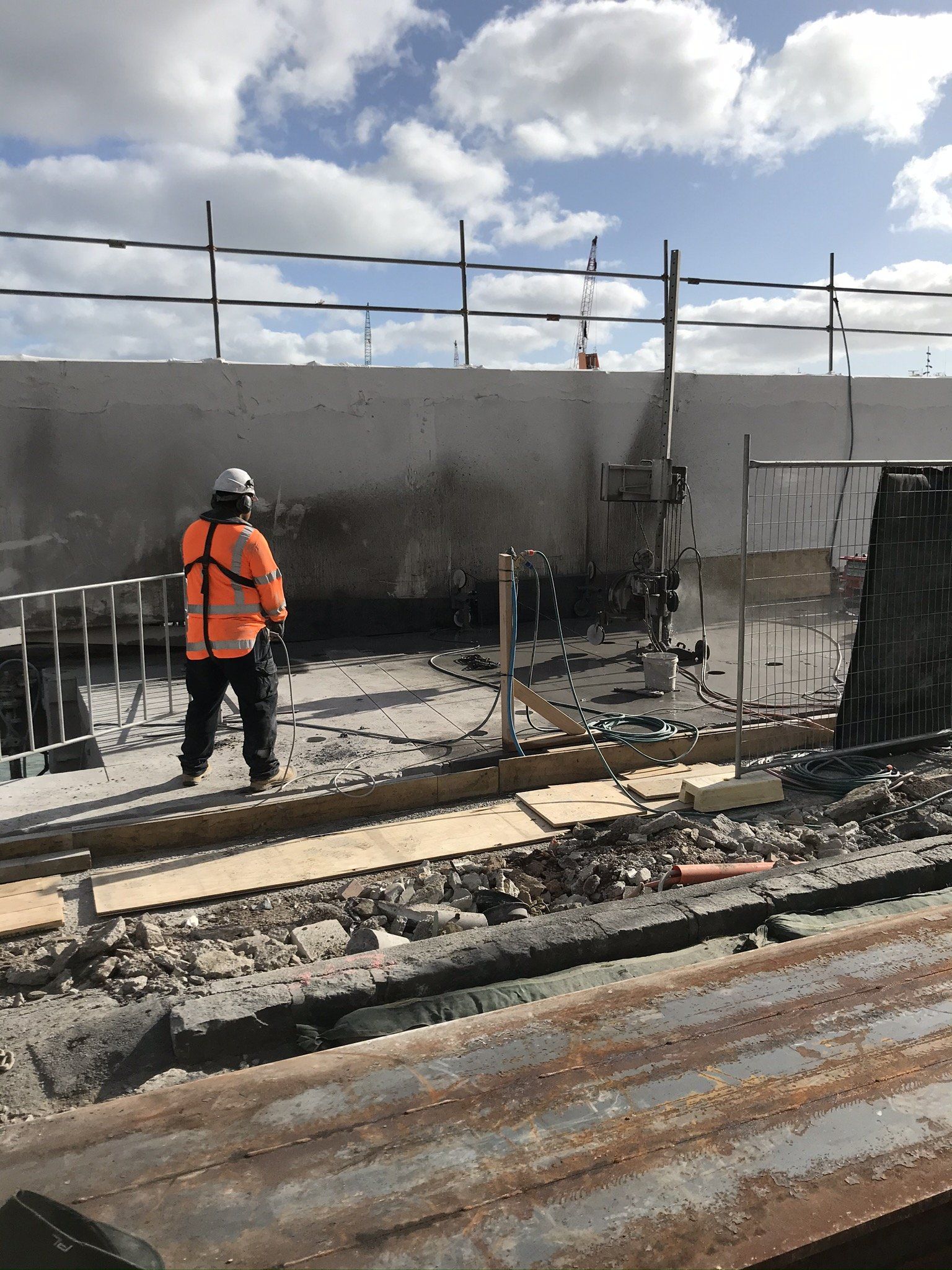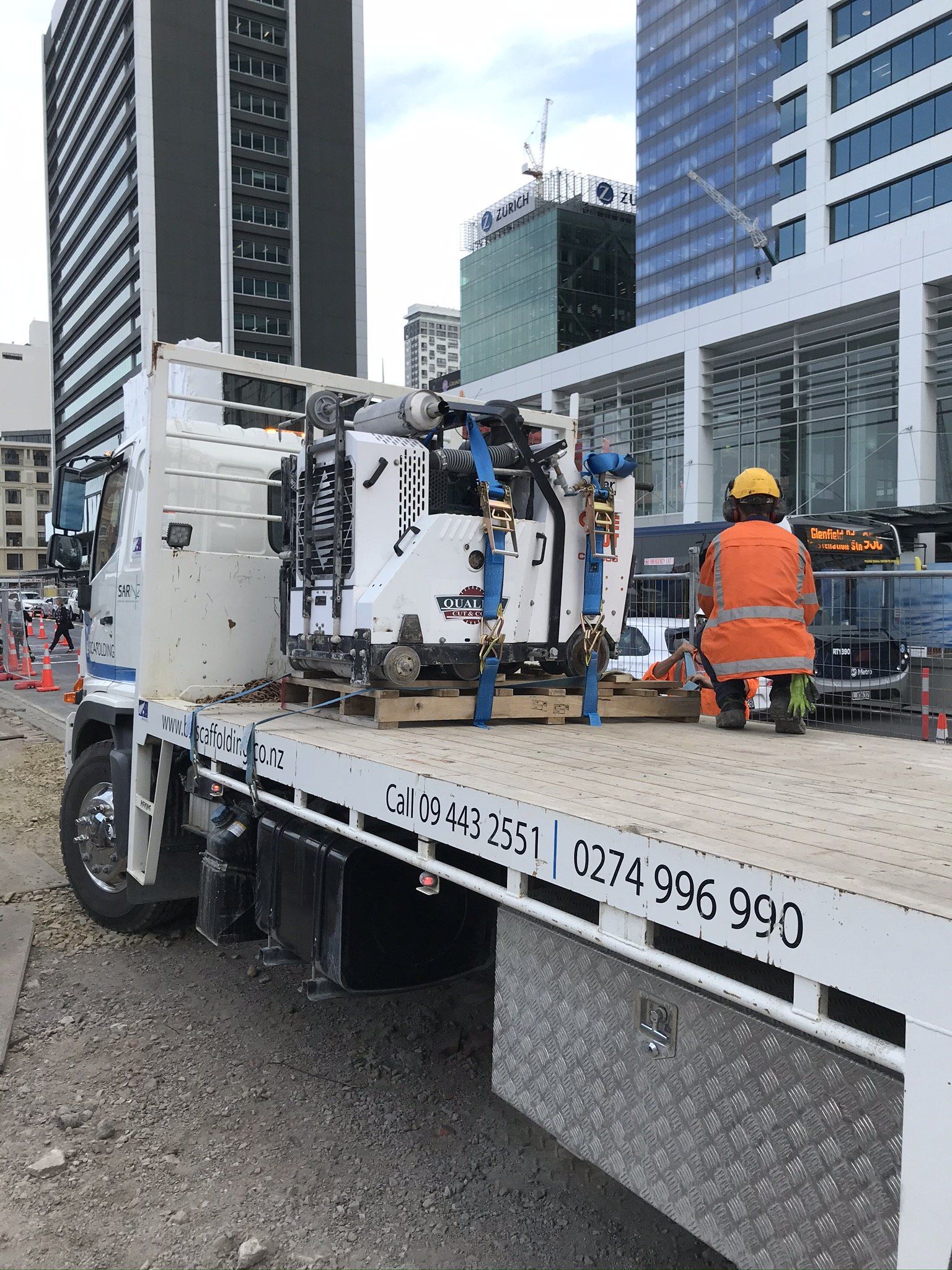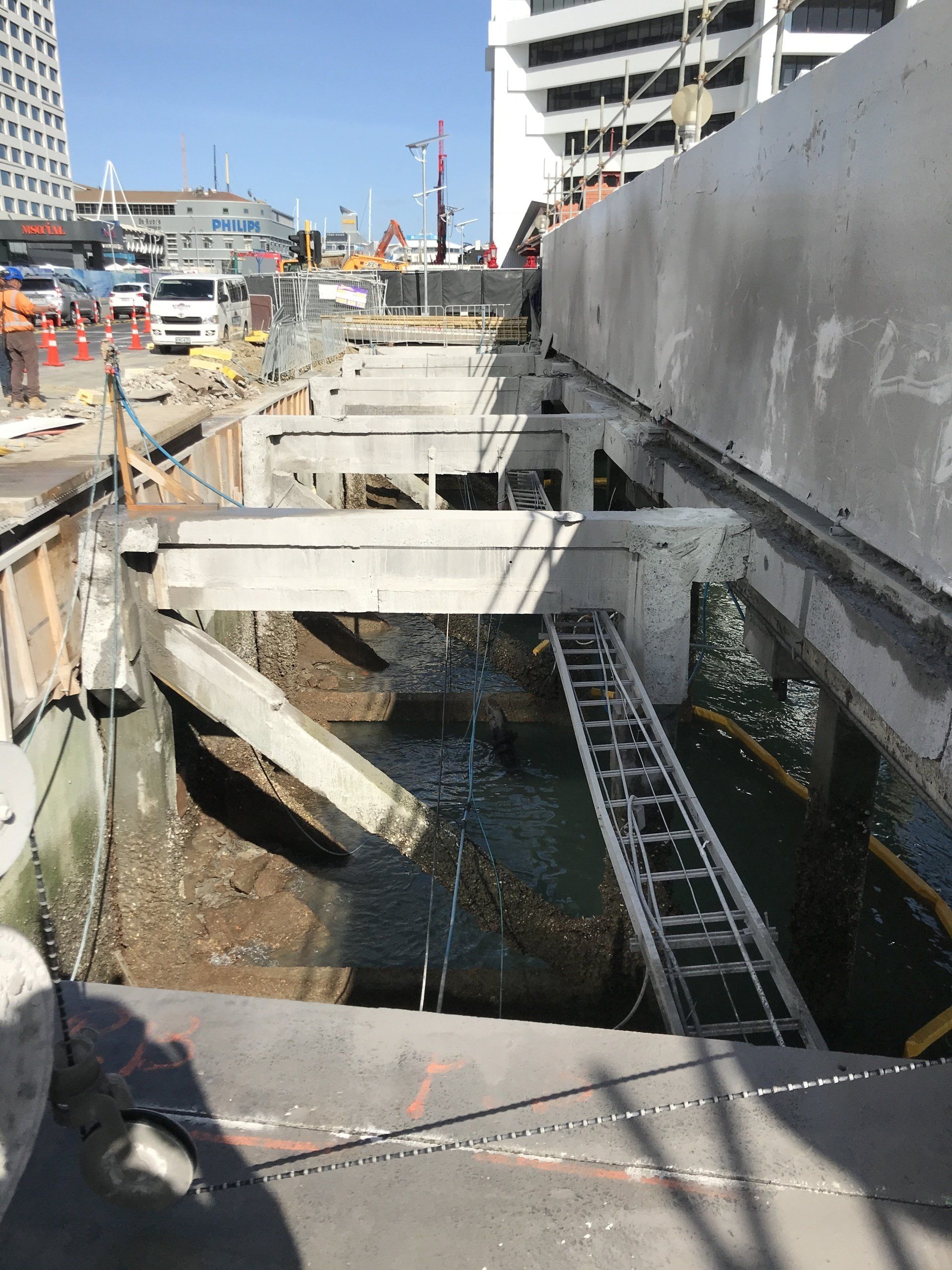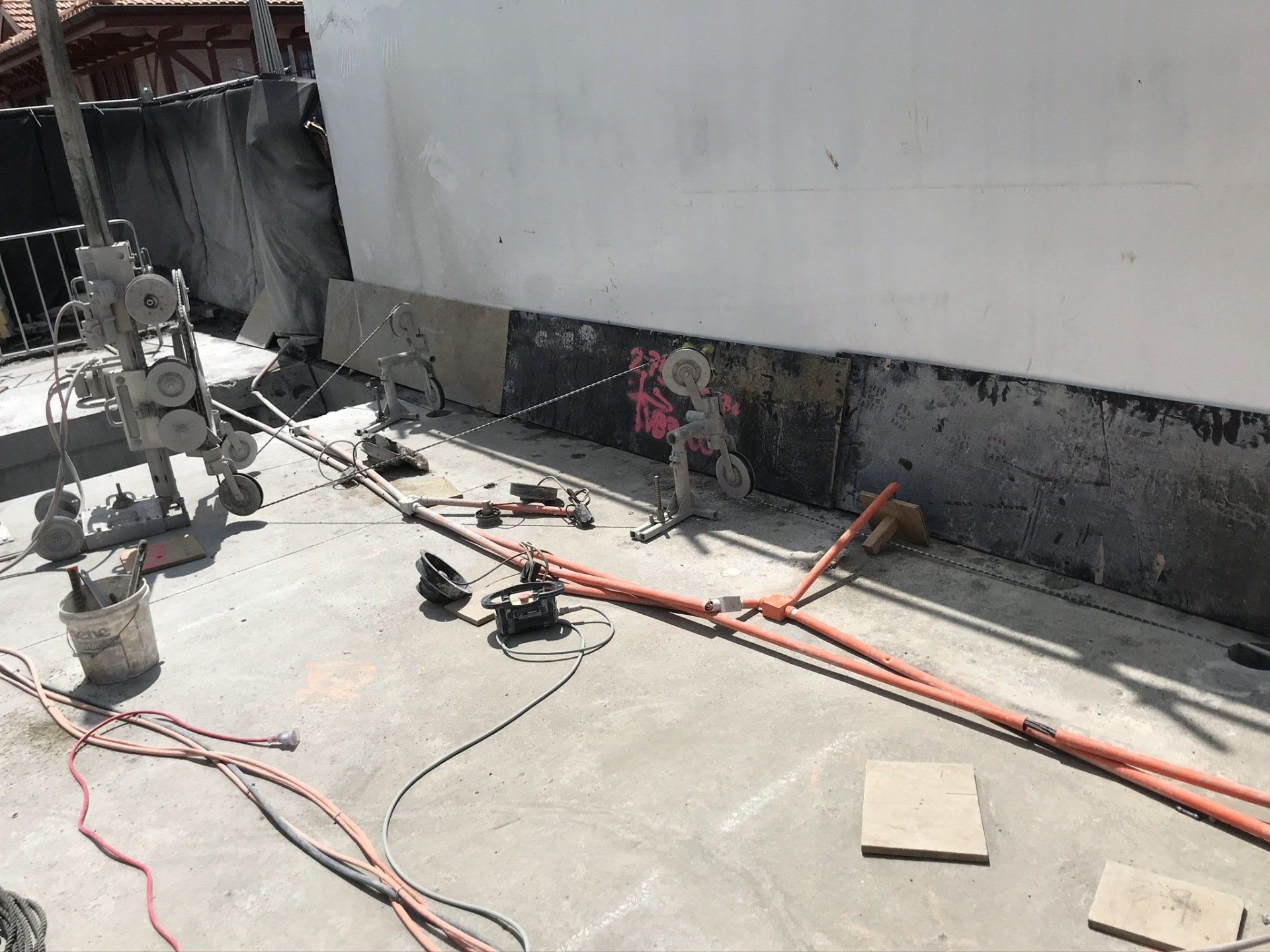Get in touch
027 306 8155
admin@qualitycut.co.nz
PORT NELSON
WHARF DECONSTRUCTION
Aim:
To deconstruct a 100m x 25m wharf at Port Nelson while allowing adjoining wharf to remain functional.
Salvage of materials where possible by Quality Cut & Core, including disposal of materials in accordance with Resource Consent regulations
QUICK FACTS
- 100 year old compromised wharf
- 650 tonne of hardwood timber removed
- 800 tonne of concrete removed
- Took just 35 days to cut & crane entire wharf deck
- No cutting off boats
- No chainsaws
- Live operational port
- Custom designed diamond wire
- Recycled timber and concrete materials
CHALLENGES
The 2500m2 wharf is a mix of hardwood timber, concrete and asphalt which required innovative demolition techniques.
The adjoining wharf was always to remain operational throughout the project, with both scheduled and unscheduled vessels berthing to offload containers 2-3 times per week. The stern of the vessels overhung the working area thereby requiring a collaborative approach to scheduling deconstruction works, minimising down-time as much as possible.
The quality of the wharf was severely undermined, limiting the weight allowed on deck.
Demolition of a wharf in an operational port facility presents environmental hazards that need to be carefully considered. The technique of demolition was aligned with the environmental considerations through lack of vibrations, total ban of chain sawing, minimal debris and minimal slurry output. Cutting off boats or barges was also prohibited.
SOLUTIONS
QCC formed a cut plan specific for this project with each lift itemised, taking into account the challenges outlined.
The deck was separated into individual lift sections and were cut using QCC’s Pentruder Wire Saws, being craned off onto truck decks for cartage to a Sorting / Salvage yard.
QCC worked in closely with diamond tool manufacturers both locally and internationally to trial specific wire for this project.
Cutting timber and concrete can present challenges, however QCC utilised the correct resources and successfully completed this project with confidence.
QUEENS WHARF, DOWNTOWN AUCKLAND
CONCRETE WHARF DEMOLITION
Aim: To deconstruct a 50m x 5m pedestrian concrete wharf at the Downtown Ferry Basin Redevelopment site while allowing pedestrian access and traffic flow to continue within a close proximity.
QUICK FACTS
- Nearing 100 years old
- 200 tonne of concrete removed
- Quay Street traffic remained open
- Detailed cutting methodology required for Auckland Transport
- Restrictions on noise due to pedestrians
- Cutting scope included concrete deck, beams and piles
- Ferry Terminal remained operational throughout works
CHALLENGES
The 250m2 section of wharf was located within very close proximity to both traffic on Quay Street, and pedestrians using the adjoining wharf for the Ferry Terminal and access-way. This placed restrictions on cutting techniques and methodology for removal of the concrete. The concrete wharf needed to be cut and craned directly onto a truck for disposal, as there was very little room onsite to stockpile. There were also restrictions on noise levels.
The cut plan had to take into consideration the site's small footprint and therefore the restriction on size of crane used.
This project raised many environmental concerns that needed to be closely considered in the cut plan.
SOLUTIONS
QCC worked with the Client to assist in creating the cut plan specific for this project taking into account the challenges outlined.
QCC's Pentruder Wire Saws were utilised to reduce noise levels by 50% compared to traditional cutting techniques.
The wharf deck was cut into 24 sections while the beams and piles were wire sawed and removed individually to ensure that all lifts were cut to size and could be carted away immediately.
QCC worked in closely with the Client and their environmental team to minimise environmental hazards. Slurry contamination was reduced by use of vacuums as well as a slurry barge. The barge was placed under the cuts so the slurry produced did not enter the water.
